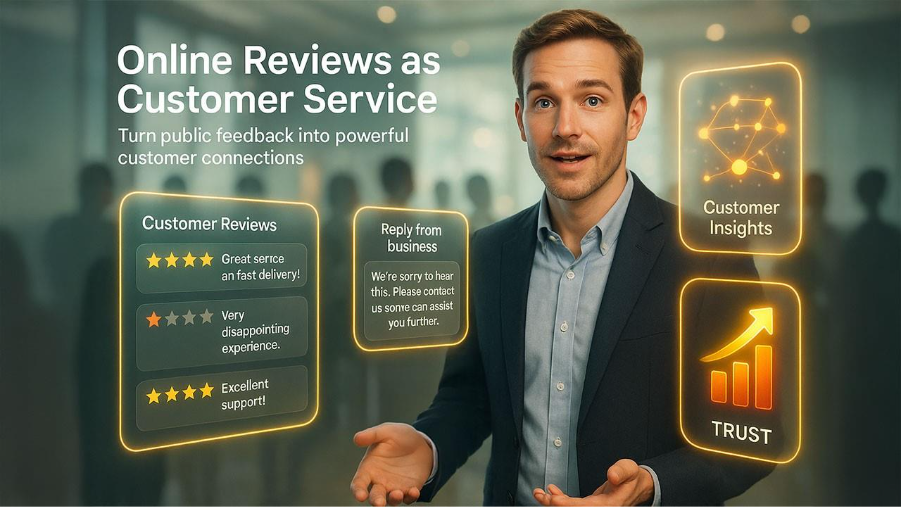Fleet management is at a very critical juncture. Increasing fuel costs, complex logistics networks, more stringent regulations, and customer expectations are calling for driving cheaper and smarter from transportation entities. Its management software in the past
Fleet management is at a very critical juncture. Increasing fuel costs, complex logistics networks, more stringent regulations, and customer expectations are calling for driving cheaper and smarter from transportation entities. Its management software in the past has typically relied on off-the-shelf software that has limited customization and does not meet the unique, operational, challenges.
It is here that customized transport software is required. Built to business needs, the programs include vehicle tracking, routing optimization, predictive maintenance, driver management, and analytics in an integrated package. By balancing technology and business processes, fleet operators can maximize efficiency, control expenses, and elevate service quality.
Here, we discuss three main reasons custom transportation software promotes fleet efficiency and why more companies are electing to build out custom solutions over everything-included platforms.
1. Optimized Route Planning and Real-Time Tracking
The capacity to follow vehicles in real time and route-optimize is perhaps the most self-evident effect of custom transportation software. Commercial packages will typically utilize generic routing algorithms that do not consider particular operating variables, including vehicle types, delivery urgency, traffic patterns, and regulatory requirements.
Through collaboration with a transportation software development company, fleets are able to leverage tailored solutions and sophisticated algorithms that are crafted specifically to their operation.
- Dynamic Route Optimization: Algorithms dynamically adjust routes in real-time according to traffic flow, delivery windows, and driver availability. For instance, a courier company with outlets in several cities can automatically route drivers through traffic jams or roadblocks in order to deliver goods on time.
- Geofencing and Location Tracking: Fleet managers receive instant notifications when vehicles enter or exit designated areas, which increases accountability in management of operations. This feature is beneficial to fleets that transport high-value products and sensitive shipments.
- Integration with Telematics: GPS device, IoT sensors, and onboard diagnostics relay data to the platform and provide visibility into vehicle location, speed, fuel usage, and engine health in real-time and on-demand.
The result is significant time savings, lower fuel consumption, and improved delivery commitment consistency. Businesses that adopt advanced delivery routing software typically achieve fuel savings of 15-30%, reduce total mileage by up to 25%, and maintain on-time delivery rates exceeding 95%. Real-time information also allows dispatchers to quickly respond to disruptions due to weather, traffic, or unscheduled vehicle downtime.
In addition, custom software can also take account of past history to anticipate traffic trends, peak delivery hours, and seasonal patterns so that companies are able to anticipate in advance instead of waiting. For example, logistics companies transporting perishable goods can identify the best delivery times to minimize spoilage and keep customers happy.
2. Predictive Maintenance and Vehicle Health Monitoring
In fleet operations, maintenance accounts for a significant portion of overall costs. Unscheduled failures not only increase repair costs but also disrupt the operation and reduce service dependability. Transportation software can take the guesswork out of vehicle health and provide maintenance before a condition worsens.
Major functionalities are:
- Predictive Analytics: Based on the past history, vehicle sensor data, and usage patterns, the software can anticipate when the components are going to fail, enabling proactive maintenance. For example, an algorithm might raise an alarm for a brake system reaching the wear levels or an engine component exhibiting unusual temperature trends.
- Automated Warnings: Preventive maintenance jobs such as tire rotation, brake inspections and oil replacements are alerted to fleet managers. Warnings may be prioritized based on their operational effect and vehicle usage.
- Detailed Vehicle Profiles: All maintenance history, mileage, and usage data for each vehicle are rolled up into a single snapshot, making it easier to report and comply. Managers can make better decisions about which vehicles to retire, replace, or redeploy.
By moving from reactive to predictive maintenance, fleets can reduce downtime, maximize the lifecycle of their vehicles, and essentially reduce their total cost per mile. Predictive maintenance also promotes safety by ensuring that vehicles are maintained in safe operating condition.
Advantages go beyond cost savings. For instance, bus and train fleets equipped with predictive maintenance can decrease schedule-disrupting breakdowns, while logistics firms shipping perishable products can lower delays that affect customer satisfaction. Managers further use predictive information to automate inventories of spare parts so the correct parts are available when needed, further lowering downtime.
3. Improved Data-Driven Decision Making
Custom transportation software also allows for data-driven decision-making, with raw fleet data being converted into actionable insights. Unlike generic solutions that provide mere reporting, custom platforms can be tailored to an organization's KPIs, operational objectives, and business processes.
Capabilities can be:
- Fleet Performance Dashboards: Fleet Performance Dashboards: Supervisors and fleet managers can monitor fuel efficiency, driver behavior, on-time delivery, and vehicle utilization in real-time. Fleet managers and supervisors can see more detailed data to identify inefficiencies by route, driver, or vehicle type through detailed dashboards.
- Cost Optimization and Analysis: The application has the capability to identify inefficiencies, for instance, vehicles not being used to their maximum potential, inefficient routes, or routes with high fuel consumption, and provide suggestions for improvement. A delivery company, say, can cluster deliveries from adjacent locations to reduce fuel consumption and the cost of man hours.
- Compliance Monitoring: Ensures that drivers adhere to regulations like safety procedures, emission standards, and hours-of-service restrictions. Regulatory compliance dashboards help companies avoid being sanctioned and retain their operational licenses.
- Scenario Planning: Operators may use models to evaluate fleet size changes, route adjustments, or changes to the schedule to understand potential implications before taking action. This proactive planning allows managers to make better strategic decisions, whether expanding into new markets or responding to unexpected demand growth.
Fleet operators can utilize data-driven intelligence to make strategic decisions to optimize efficiency, reduce costs, and improve customer experience. In an e-commerce setup with just-in-time delivery and transport, such a competitive edge can prove to be absolutely decisive.
In addition, advanced analytics can help identify driver training requirements. For instance, continuing inconsistencies from best-practice driving behavior—e.g., aggressive braking or idling—can be met with tailored training modules designed to improve safety and minimize fuel consumption in the long term.
Additional Benefits of Custom Transportation Software

Along with route optimization, predictive maintenance, and data-driven decision-making, there are other benefits with custom solutions:
- Scalability: The solutions can grow with the fleet, providing the opportunity to add new vehicles, new locations, and new routes, yet keep the same functionality.
- Integration: Custom software can integrate with ERP systems, warehouse management software, and customer portals to attain a completely integrated end-to-end logistics community.
- Driver Engagement: In-cab interfaces and mobile apps enhance communication, aid in navigation, and encourage real-time reporting of issues that drivers face. Focused drivers are also more prone to drive optimized routes and follow safety regulations.
- Security and Compliance: Custom solutions can place access controls, audit logging, and reporting mechanisms in place to respond to regulatory requirements, protecting sensitive operational data.
- Environmental Effects: By optimizing fleets' routing and minimizing intervals of decreased speeds or no-speed, organizations can minimize emissions to achieve sustainability targets and regulatory.
Collectively, these traits form a revolutionary fleet operation that consolidates countless systems into a single, integrated intelligent agency capable of responding in a timely manner to operational problems.
Main Observations
- Paths are optimized and monitored in real-time, resulting in lower fuel expenses and greater dependability for delivery operations, and quicker response in case of disruption.
- Predictive maintenance and health monitoring reduces asset downtime, contributes to asset life cycles, and enhances safety.
- Data-driven insights facilitate enhanced decision making, cost effectiveness, and assurance of compliance.
- Custom software solutions will power integration, driver app interactions, and scalability.
- Investment in customized transportation software systems brings technology into line with operational objectives and produces measurable efficiency savings.
Wrapping Up
Fleet productivity is no longer about keeping vehicles on the road or assigning drivers—it's about leveraging data, automation, and intelligent systems to maximize operations from end to end. Custom transportation software provides a strategic advantage by addressing every fleet's unique issues, integrating disparate systems, and providing actionable insight.
Organizations utilizing tail oared solutions enjoy quicker, more dependable deliveries, reduced expenses, and better customer satisfaction. From optimizing route performance, scheduling maintenance, or expediting a data-driven decision process, tailor oared transportation solutions provide tangible advantages not available from core software solutions.
With increasingly complicated transportation networks and escalating customer demands, the investment in the appropriate transportation software to meet your particular needs is not a choice—it is a necessity for fleets seeking to operate successfully, safely, and competitively.
With the proper software, fleet managers are able to transform operational challenges into opportunities, allowing technology to become a business enabler rather than a business support function.
Respond to this article with emojis






